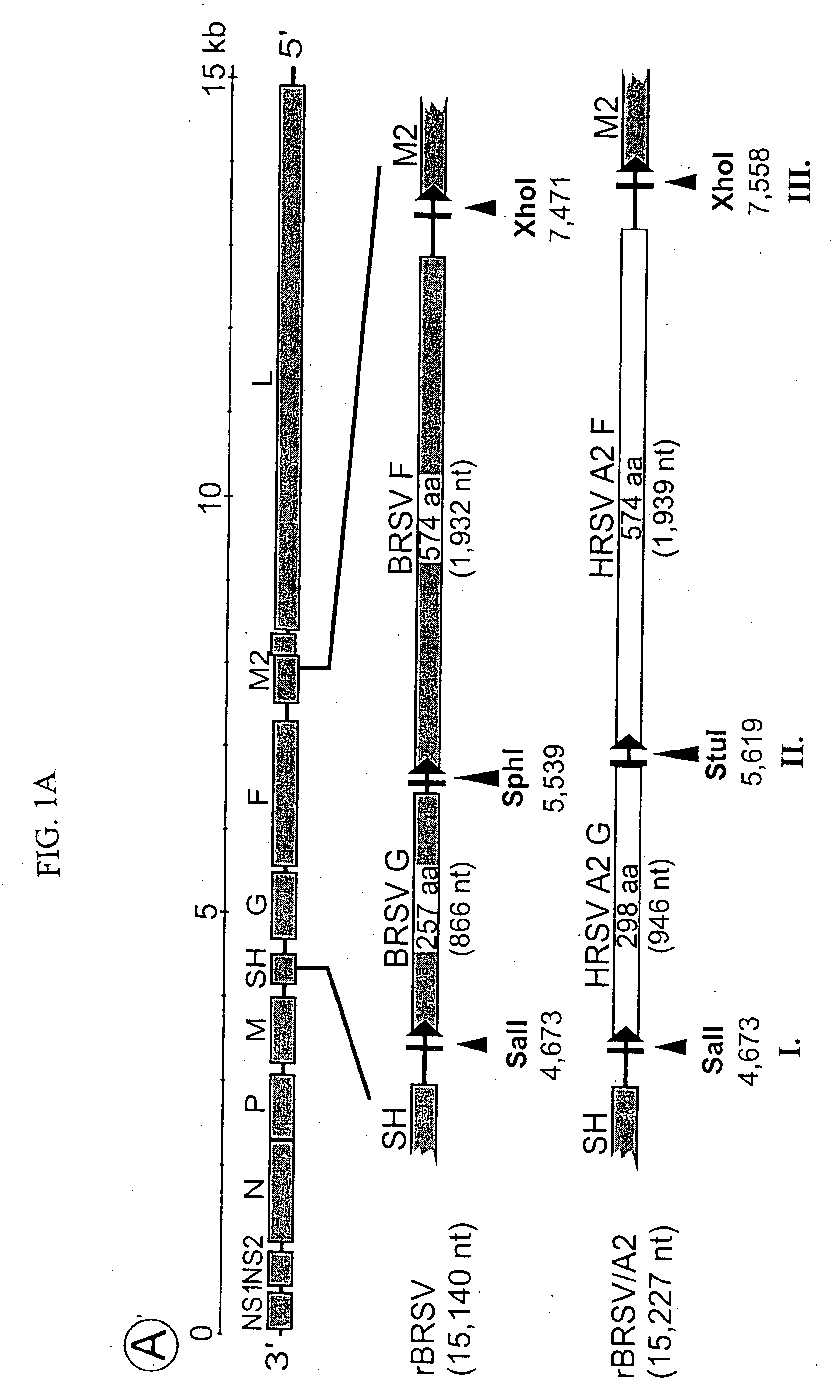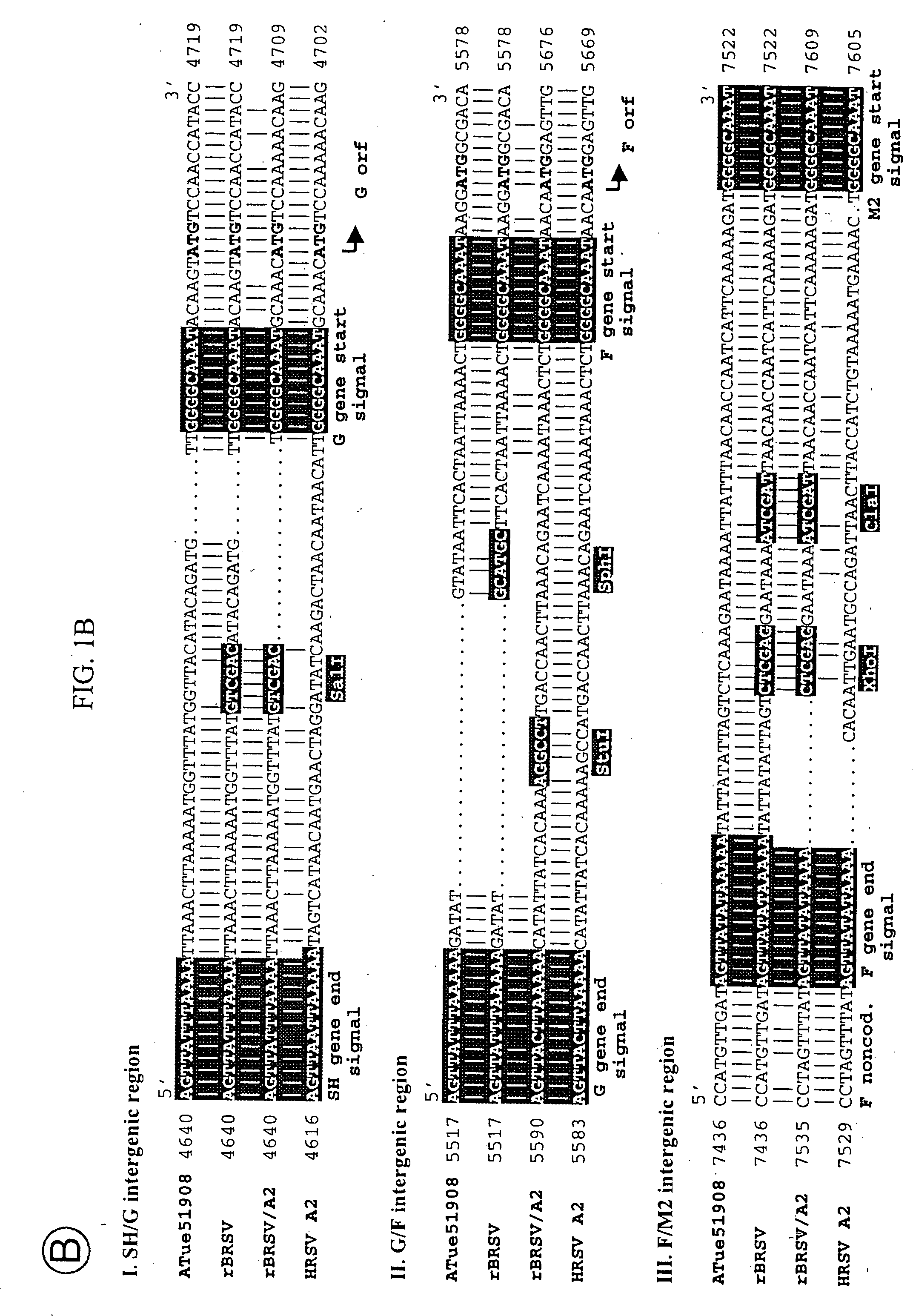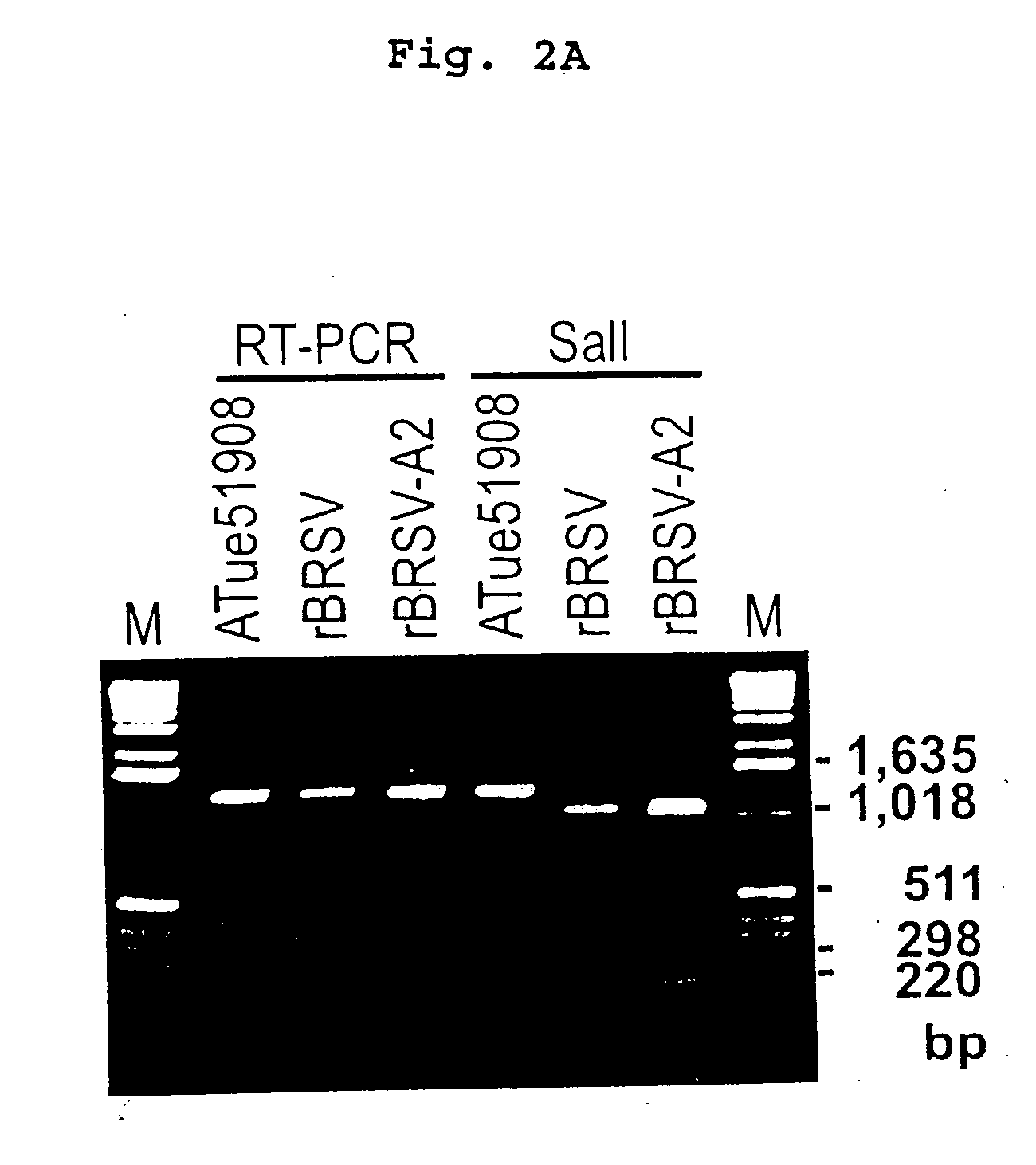Production of attenuated, human-bovine chimeric respiratory syncytial virus vaccines
- Summary
- Abstract
- Description
- Claims
- Application Information
AI Technical Summary
Benefits of technology
Problems solved by technology
Method used
Image
Examples
example i
Construction of cDNA Encoding a Chimeric BRSV / HRSV Antigenome and Recovery of Infectious rBRSV / A2 Chimeric Virus
[0223] Infectious rBRSV can be recovered from cloned cDNAs encoding a viral antigenomic RNA and the N, P, M2-1 and L support proteins (Buchholz et al., J. Virol. 73:251-259, 1999), using a strategy similar to that described for HRSV (Collins et al., Proc. Natl. Acad. Sci. USA 92:11563-11567, 1995; Bermingham and Collins, Proc. Natl. Acad. Sci. USA 96:11259-11264, 1999; Bukreyev et al., J. Virol. 70:6634-6641, 1996; Bukreyev et al., J. Virol. 71:8973-8982, 1997; Whitehead et al., J. Virol. 72:4467-4471, 1998; Whitehead et al., Virology 247:232-239, 1998; Collins et al., Virology 259:251-255, 1999; Bukreyev et al., Proc. Natl. Acad. Sci. USA 96:2367-2372, 1999; Juhasz et al., Vaccine 17:1416-1424, 1999; Juhasz et al., J. Virol. 73:5176-5180, 1999; Teng and Collins, J. Virol. 73:466-473, 1999; Whitehead et al., J. Virol. 73:9773-9780, 1999; Whitehead et al., J. Virol. 73:871...
example ii
In Vitro Analysis of Recombinant Chimeric rBRSV / A2 Virus
[0231] To prepare stocks of virus for further analysis, monolayers of bovine MDBK cells were infected with a multiplicity of infection (MOI) of 0.1 with rBRSV or rBRSV / A2. After 90 minutes of adsorption, the inoculum was removed and cells were maintained in minimum essential medium supplemented with 3% fetal bovine serum (FBS). When the cytopathic effect (CPE) was pronounced, typically after 4 to 7 days of incubation, the medium was adjusted to 100 mM MgSO4 and to 50 mM HEPES (pH 7.5) in order to stabilize the virus (Femie and Gerin, Virology 106:141-4, 1980, incorporated herein by reference), and cells and medium were subjected to three rounds of rapid freezing to −70° C. and rapid thawing in order to release virus. Cell debris was removed by centrifugation. Biologically-derived HRSV strain Long was propagated in HEp-2 cells in the same manner. Strain Long is very similar to strain A2 with regard to sequence analysis and reac...
example iii
Construction of cDNA Encoding a Chimeric BRSV / HRSV Virus Containing a Single Gene Replacement Involving a Different HRSV Subgroup A Virus
[0239] The chimeric rBRSV / A2 virus described above involved the simultaneous substitution of two surface glycoproteins, G and F. It was of interest to determine whether a BRSV / HRSV chimeric virus could be made in which the substitution involved only one of the two glycoproteins, and whether the substitution could be made with a different subgroup A strain, namely the Long strain. A second BRSV antigenome cDNA was constructed which contains the HRSV strain Long F gene in place of the BRSV F gene (FIGS. 7A and 7B). Total RNA was made from HEp-2 cells infected with HRSV strain Long. Subsequently, RT-PCR was performed using primers FLa (5′-AGGAATTCGCATGCGGGGCAAATAACAATGGAGTTGCCAATC-3′ (SEQ ID NO.: 21), nt 1 to 28 of the HRSV strain Long F gene sequence, containing an EcoRI / SphI adapter, underlined) and FLRa (5′-AGGAATTCTCGAGTTTTTATATAACTATAAACTAGGAATC...
PUM
| Property | Measurement | Unit |
|---|---|---|
| Volume | aaaaa | aaaaa |
| Volume | aaaaa | aaaaa |
| Volume | aaaaa | aaaaa |
Abstract
Description
Claims
Application Information
 Login to View More
Login to View More - R&D
- Intellectual Property
- Life Sciences
- Materials
- Tech Scout
- Unparalleled Data Quality
- Higher Quality Content
- 60% Fewer Hallucinations
Browse by: Latest US Patents, China's latest patents, Technical Efficacy Thesaurus, Application Domain, Technology Topic, Popular Technical Reports.
© 2025 PatSnap. All rights reserved.Legal|Privacy policy|Modern Slavery Act Transparency Statement|Sitemap|About US| Contact US: help@patsnap.com



